Daniel Strain
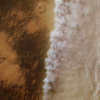 Dust storms on Mars could one day pose dangers to human astronauts, damaging equipment and burying solar panels. New research gets closer to predicting when extreme weather might erupt on the Red Planet.
Dust storms on Mars could one day pose dangers to human astronauts, damaging equipment and burying solar panels. New research gets closer to predicting when extreme weather might erupt on the Red Planet.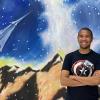 CU Boulder graduate student Dezell Turner has borrowed inspiration from his favorite sci-fi films to design an augmented reality tool that could one day help aerospace companies plan their routes from Earth to the moon.
CU Boulder graduate student Dezell Turner has borrowed inspiration from his favorite sci-fi films to design an augmented reality tool that could one day help aerospace companies plan their routes from Earth to the moon.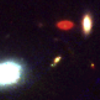 Deep in the universe lurk a population of mysterious, red galaxies that, until recently, were all but invisible to scientists. Now, astrophysicists at CU Boulder have drawn on new observations to learn more about these objects.
Deep in the universe lurk a population of mysterious, red galaxies that, until recently, were all but invisible to scientists. Now, astrophysicists at CU Boulder have drawn on new observations to learn more about these objects.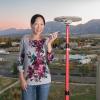 Millions of Android phones across the globe have helped to capture the swirls and bubbles in Earth's atmosphere high above the surface in incredible detail.
Millions of Android phones across the globe have helped to capture the swirls and bubbles in Earth's atmosphere high above the surface in incredible detail.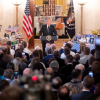 Following Donald Trump’s victory this week, CU Boulder’s Janet Donavan breaks down how the president-elect beat the polls yet again—and how the nation can move forward after an especially divisive election.
Following Donald Trump’s victory this week, CU Boulder’s Janet Donavan breaks down how the president-elect beat the polls yet again—and how the nation can move forward after an especially divisive election.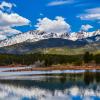 A series of rocks hiding around Colorado's Rocky Mountains hold clues to a frigid period in Earth's past when glaciers several miles thick may have covered the entire planet.
A series of rocks hiding around Colorado's Rocky Mountains hold clues to a frigid period in Earth's past when glaciers several miles thick may have covered the entire planet. You've probably seen bryozoans at the beach without even knowing it—some look like floating balls of mucus, while others resemble a bit of crust growing over docks and other hard surfaces. According to a new study, these strange organisms may reveal how colony-forming animals evolved a system for divvying up jobs millions of years ago.
You've probably seen bryozoans at the beach without even knowing it—some look like floating balls of mucus, while others resemble a bit of crust growing over docks and other hard surfaces. According to a new study, these strange organisms may reveal how colony-forming animals evolved a system for divvying up jobs millions of years ago.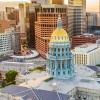 A new survey finds that Colorado voters may be primed to add the right to abortion into the state's constitution and could pass a ban on hunting wild cats.
A new survey finds that Colorado voters may be primed to add the right to abortion into the state's constitution and could pass a ban on hunting wild cats.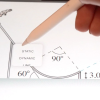 In an ordinary physics textbook, a skier teeters at the top of a hill. Now, with a new tool called Augmented Physics, students can make that skier move—giving them a chance to see physics in action.
In an ordinary physics textbook, a skier teeters at the top of a hill. Now, with a new tool called Augmented Physics, students can make that skier move—giving them a chance to see physics in action.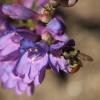 A new community science project aims to help the CU Museum of Natural History digitize its collection of bees, some of which were collected in Colorado as far back as the 1870s.
A new community science project aims to help the CU Museum of Natural History digitize its collection of bees, some of which were collected in Colorado as far back as the 1870s.


